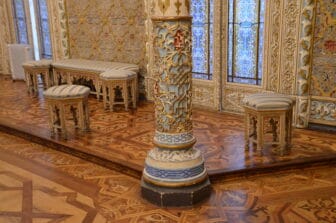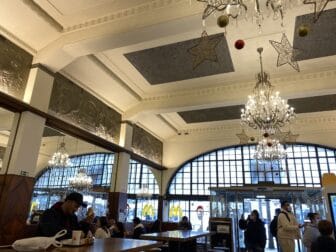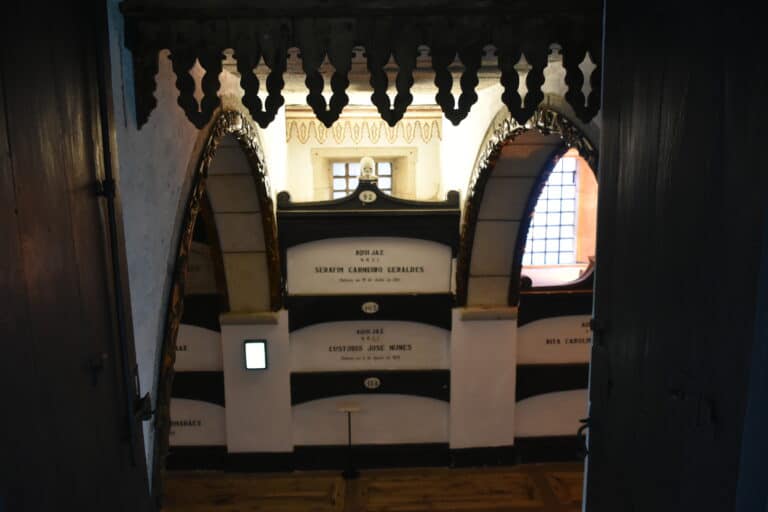
[ Jan.2022 ] Shortly after we started staying in Oporto, Portugal, the person at the tourist information centre recommended us to see Church of San Francisco, saying this was “a must-see spot”.
So we visited there.
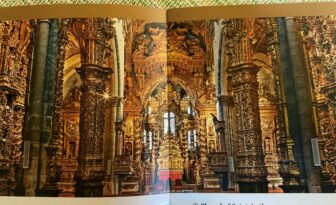
It is located on the street called Rua do Infante D. Henrique, which is a short distance from the riverside of the old town.
Admission cost € 17 for two people including the leaflet.
The church, which became a UNESCO World Heritage Site in 1996, has a history dating back to the 13th century.
The main church was amazingly gorgeous.
However, unfortunately photography was strictly prohibited here.
So, I will post the photo of the pamphlet I received.
I wonder if you can see the appearance of the over-decorated space from this photo?

Each of the chapels which surrounds the nave has special meanings, but the one that caught my eye was the chapel depicting the hardships of the evangelists.
The retable was built in 1776, and the panel in the eye level of the visitors depicts the hardships that Franciscan monks suffered in Morocco.
The pamphlet states that the Portuguese people have a very strong impression of their sufferings in Morocco.
But what caught my attention was the upper panel.
This depicts the suffering of Franciscan monks in Nagasaki in Japan.
It is the world of Shusaku Endo’s novel “Silence”, which became a film.
I haven’t seen the film, but I read the book.
Even for me who is a non-Christian, it’s a heavy profound story and I will never forget it.
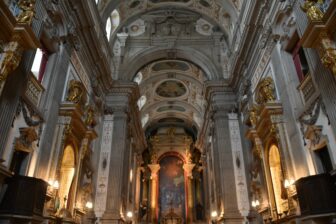
Indeed, those missionaries in the novel were Portuguese.
The event is engraved in this divine church as part of the important history of Christianity.
I thought I must have a picture of this, so I took a photo secretly on my mobile phone, which I’ll post here.
In addition to this main church, there is a church called “Church and Sacristy of the Third Order” built at the end of he 18th century on the premises, where we were allowed to take photos.
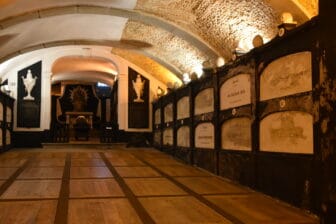
Then, we saw the museum displaying the treasures of the church and headed to the catacombs.
The catacombs were an orderly and beautiful space, with numbered coffins lined up.
This was made in 1746, and the bodies of monks are buried.

